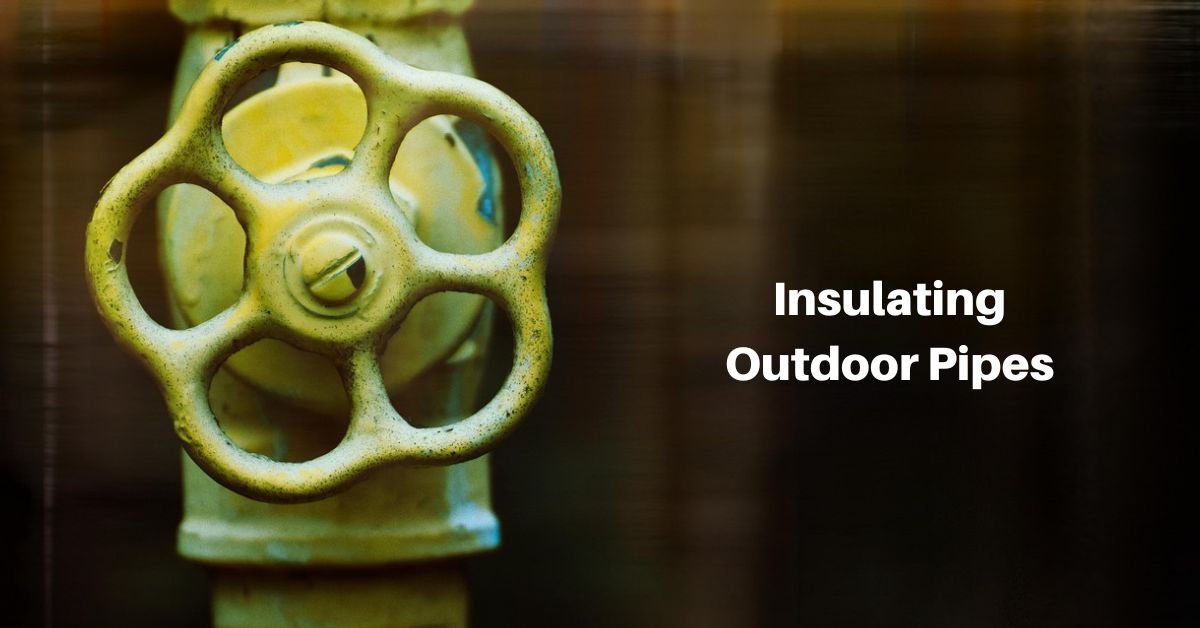When winter approaches, one crucial task that should be on your checklist is insulating outdoor pipes. This preventative measure is essential to avoid the inconvenience and potential disaster of frozen and burst pipes. The damage from failing to protect your plumbing as temperatures drop can be severe and costly!
In this article, we will discuss why insulating your outdoor pipes is necessary, the materials you can use, and how to install them properly.
Why Insulate Outdoor Pipes?
Outdoor pipes are vulnerable to freezing because they are exposed to the elements and lack the warmth that indoor pipes might receive from a home’s heating system. When water inside these pipes freezes, it expands, increasing pressure within the pipe, which can cause the pipe to crack or burst. The aftermath often involves repairing the plumbing and dealing with water damage to your sidewalks or even the house’s structure, depending on where the pipe breaks and the water flows.
Insulating your pipes offers several benefits. Insulation acts as a barrier between the cold temperatures and the water inside the pipes, significantly reducing the risk of freezing. It also extends your pipes’ longevity by reducing the risk of freezing and the consequent expansion and contraction of pipes.
Of course, it’s also possible to drain outdoor pipes if you won’t need them at all during freezing weather. However, it can be difficult to properly drain pipes that run around the patio or are otherwise long and difficult to access. In these cases, it’s best to ensure they are adequately insulated before being placed.
Types of Insulation Materials
Choosing a suitable insulation material is critical to effectively protecting your pipes. Here are the most common types of insulation used for outdoor pipes, along with their advantages and drawbacks:
- Foam Insulation Tubes:
- Pros: Foam tubes are easy to install, inexpensive, and available in various sizes to fit different pipe diameters.
- Cons: They may only provide adequate protection in regions with extremely low temperatures if supplemented with more robust solutions.
- Fiberglass Wrap:
- Pros: Offers superior thermal protection and is effective in frigid climates.
- Cons: Fiberglass can irritate the skin and lungs during installation, requiring protective gear (gloves, mask).
- Heating Tape:
- Pros: Heating tape is excellent for areas prone to severe freezing. It uses electricity to warm pipes, preventing ice formation.
- Cons: Higher initial cost and ongoing energy usage. It requires access to an electrical outlet and careful installation to avoid overheating.
Step-by-Step Guide to Insulating Outdoor Pipes
To ensure your outdoor pipes are well-protected, follow these detailed steps for insulation:
- Prepare the Pipes: Ensure that your pipes are clean and dry before applying insulation. Dirt and moisture can affect the insulation’s effectiveness.
- Measure and Cut Insulation: Measure the length of the pipes you need to cover and cut your chosen insulation material accordingly. For foam tubes, select a diameter that fits snugly around the pipe.
- Secure Insulation: If foam insulation tubes are used, they typically come pre-split on one side. Slip them over the pipe and make sure the slit is securely sealed. For fiberglass wrap, wrap it tightly around the pipe and secure it with high-quality duct tape or cable ties.
- Seal Seams and Joints: Pay special attention to joints and bends in the pipes. Use additional tape or even mastic sealant to cover any gaps in the insulation to ensure complete coverage.
Special Considerations For Insulating Outdoor Pipes
When insulating your outdoor pipes, there are a few additional aspects to keep in mind to ensure complete and adequate coverage:
- Valves and Spigots: These components are often overlooked but are crucial to insulate since they can be vulnerable points for freezing. Insulate these with the same materials used for your pipes, or consider using insulated covers designed explicitly for outdoor faucets and valves.
- Complex Pipe Layouts: If your outdoor plumbing includes bends, joints, or closely spaced pipes, take extra care to ensure these areas are well covered. Use flexible insulation materials, like fiberglass wrap or specially designed foam pieces, that can be molded around complicated configurations.
Maintenance and Periodic Checks
Proper maintenance of your pipe insulation is essential to its long-term effectiveness. Here are some tips for keeping your insulated pipes in top condition:
Regular Inspections
Check your insulation at the start and end of the cold season for any signs of wear or damage. Look for tears, water logging, or areas where the insulation has come loose.
Post-Storm Checks
Inspect your insulation for any impact damage or moisture ingress after severe weather events, particularly heavy snow or ice. Even small compromises in the insulation can reduce its effectiveness.
Replacement and Repair
To prevent exposed pipes from freezing, replace any damaged insulation immediately. If using tape or cable ties, ensure they remain tight and secure around the insulation.
Maintaining the integrity of your pipe insulation is not just about preventing freezing; it’s also about ensuring that the insulation’s energy efficiency and protective qualities are preserved over time.
Insulating outdoor pipes is a critical component of home maintenance that can prevent costly and inconvenient damages caused by frozen plumbing. By insulating carefully and with the appropriate materials, you can effectively safeguard your water system against harsh winter conditions.









